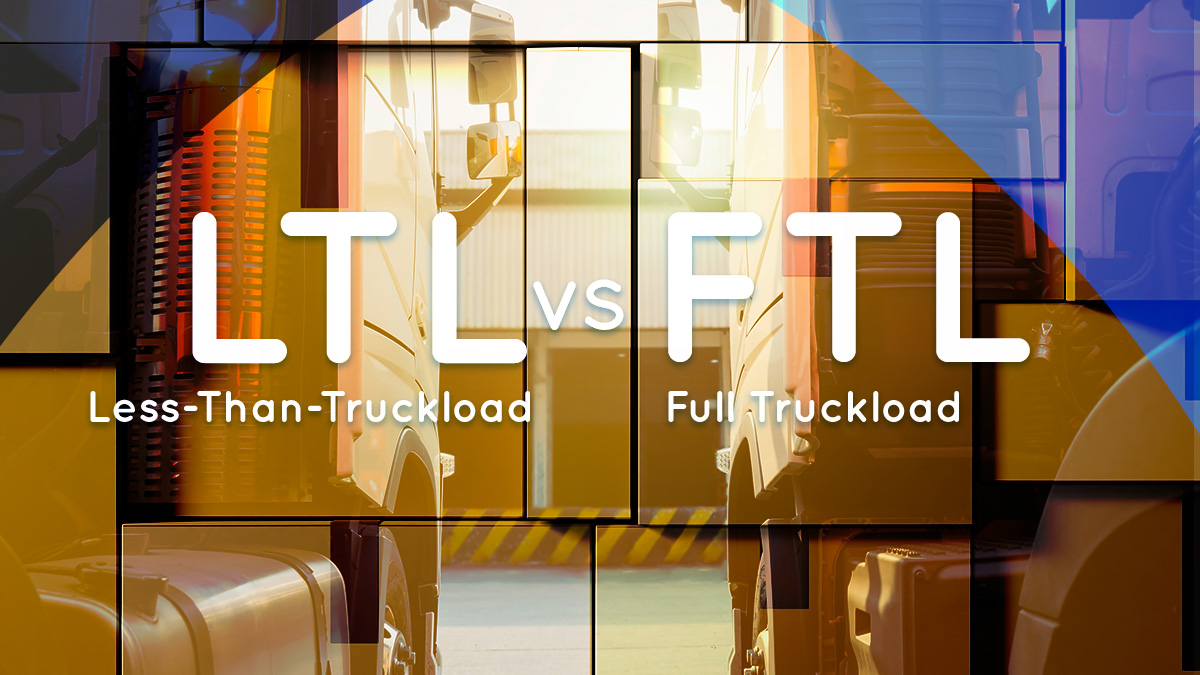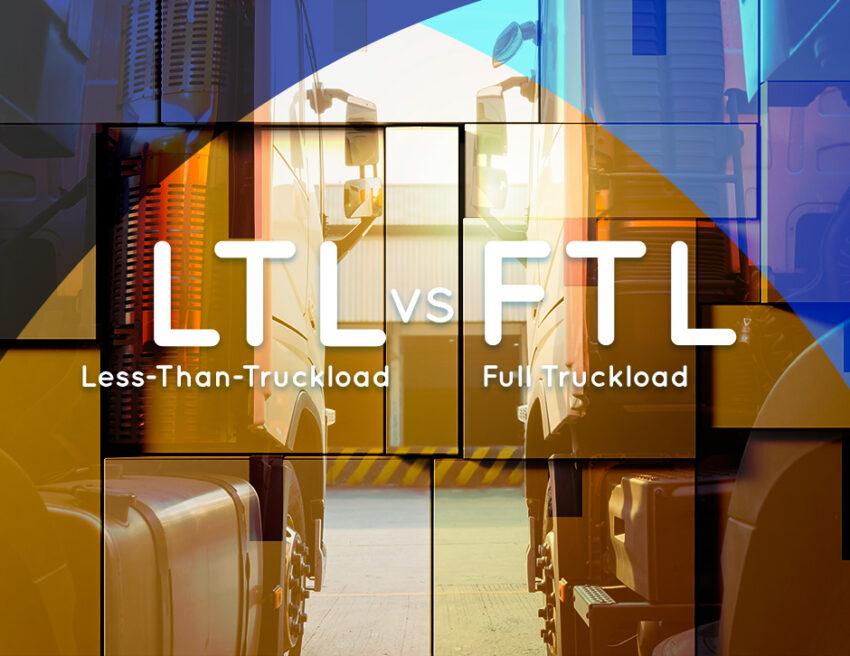Road freight shipping serves as an important mode of transport within logistics, effectively facilitating the movement of goods from origin to destination through extensive road networks. Trucking, in particular, plays a vital role in distribution strategies, offering the flexibility to accommodate diverse types and sizes of shipments. With a range of solutions tailored to specific requirements, ground freight shipping provides adaptable and reliable service to meet your logistical needs effectively.
Full truckload (FTL) and less-than-truckload (LTL) stand out as the predominant shipping methods for moving heavy ground freight. Familiarizing oneself with the differences between these trucking options is crucial for small to medium-sized freight forwarders as it directly influences rates and delivery timelines. In today’s blog we are going to talk in-depth about the pros and cons of LTL and FTL shipping to help independent freight forwarders make informed decision while shipping ground freight.

Road freight shipping insights: Differences between LTL and FTL shipping
What is LTL Shipping?
Less-than-truckload (LTL) denotes a shipping method where the freight of multiple shippers shares space on a single truck rather than being dedicated exclusively to one company’s cargo. Numerous LTL shipments are consolidated into one truck to optimize its capacity. This approach is particularly advantageous for shipments ranging from one to six pallets or those occupying less than 14 linear feet, as it maximizes the utilization of available shipping space on a given truck. Such efficiency is notably beneficial for meeting the shipping requirements of small businesses.
What is FTL Shipping?
FTL, or full truckload, describes a shipping scenario where your cargo, as implied by the term, occupies an entire truck due to its size. In this mode, your shipment isn’t combined with other customers’ freight. At the pickup point, the trailer is loaded to capacity to optimize space usage. It’s then driven directly to the destination, where your cargo is unloaded and delivered to your specified recipient. While this direct flow is typical, carriers can accommodate variations based on your requirements, including multi-stop deliveries.
Moreover, reserving the entire truck capacity, even if your shipment doesn’t fully utilize it, guarantees that your goods remain isolated throughout transit. This means you won’t encounter any concerns about your cargo being combined with other products or experiencing transfers between different carriers.
The workings of LTL and FTL shipping
Less-than-truckload (LTL) operates on a hub-and-spoke distribution model. Initially, smaller LTL shipments from various shippers are collected within a specific region. These shipments are then consolidated at a regional hub or center and loaded onto a single truck. The truck proceeds to make multiple delivery stops en route to the final destinations.
Full truckload (FTL) operates on a point-to-point distribution model where the shipper loads their cargo onto a truck that travels directly to the final destination without intermediate stops. This model is ideal for bulk loads and shipments with special handling requirements, ensuring minimal disturbance and optimal safety during transit.
Pros and Cons of LTL and FTL Shipping
Advantages of LTL
-
Cost-effectiveness
LTL presents a cost-effective solution for shipments larger than parcels but not substantial enough to fill an entire truck. By sharing transportation costs with other shippers, you can save on expenses compared to booking a full truckload for smaller shipments.
-
Flexibility
LTL offers flexibility, particularly for destinations requiring sporadic cargo deliveries. Without the need to wait for a full truck, you can ship when necessary, optimizing inventory management and enhancing your ability to meet customer demands efficiently.
Disadvantages of LTL
-
Delivery time
Due to multiple stops for consolidation and deconsolidation, LTL shipments may have longer transit times compared to FTL. The additional stops along the route can extend the overall delivery duration.
-
Handling
LTL shipments are subject to multiple handling instances during transit, increasing the risk of potential damage or mishandling. Each pick-up and drop-off point presents an opportunity for handling-related issues to arise, impacting the condition of the shipment upon arrival.
Advantages of FTL
Transit time
With FTL, the truck is exclusively dedicated to your cargo, eliminating the need for stops to consolidate other shipments. This streamlined process often results in faster transit times, ideal for time-sensitive deliveries.
Disadvantages of FTL
Optimization
While FTL offers dedicated space for your cargo, if you’re unable to fully utilize the truck’s capacity, it can lead to increased unit costs. This highlights the trade-off between FTL and LTL, where the responsibility lies with the shipper to maximize the space they’ve reserved, potentially impacting cost efficiency.
How freight forwarders belong to one of the best logistics networks can provide the right ground freight shipping solutions
Members of Conqueror Freight Network – one of the best logistics networks of our time, are some of the most reliable freight forwarders who can help you efficiently navigate your ground freight by FTL or LTL shipping. Conqueror members get to work with reputed freight forwarders from nearly 260 cities all of whom are handpicked for their financial strength, creditworthiness, reputation, business volume, and competitiveness and bound by the strict rules of the network. As a CQR agent never again will you struggle with unknown agents who are unreliable, unproductive or bad payers.
Trucking operations stands as a fundamental expertise for most independent freight forwarders, encompassing both LTL and FTL services. Leveraging their daily experience in this realm, Conqueror members possess the acumen to discern the optimal approach for managing your freight. Serving diverse clients across various industries, reputed freight forwarders belonging to one of the best international freight forwarding network can help you gain insight into different products, challenges, and pertinent factors shaping shipping dynamics. This breadth of experience enables them to assess your shipping needs comprehensively, selecting the most efficient option while preemptively identifying potential risks or cost escalations.


